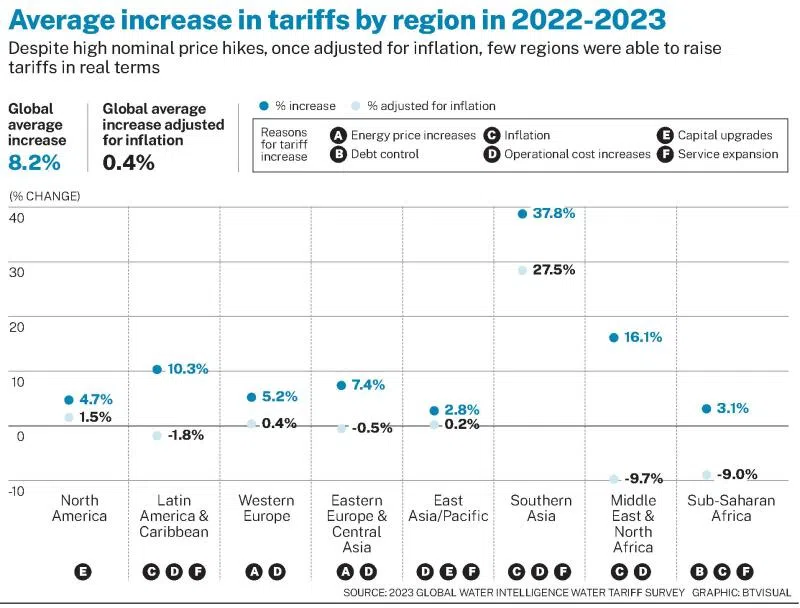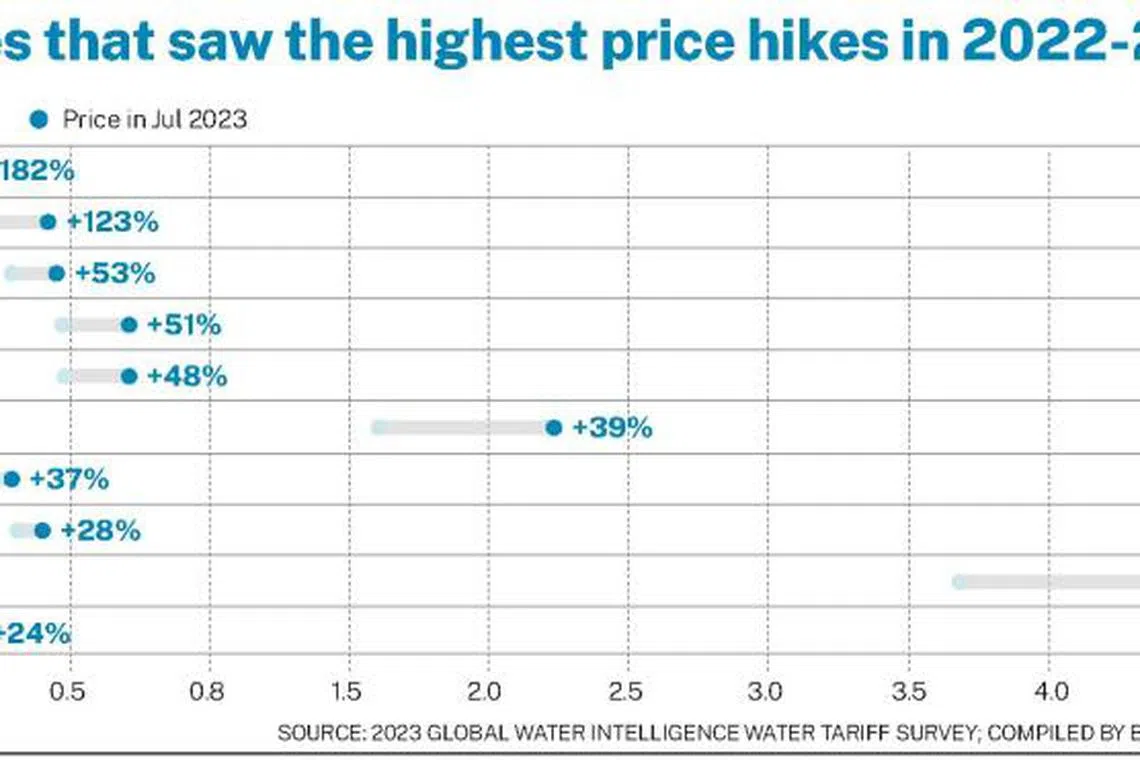How Singapore’s water tariffs compare with other countries
The Republic ranks 55th out of 188 nations in terms of water price as at July 2023

SINGAPORE on Wednesday (Sep 27) announced an 18.2 per cent (S$0.50) hike in water tariffs that will be implemented in two stages: on Apr 1 next year and in 2025.
According to findings from the 2023 Global Water Intelligence (GWI) Water Tariff survey, it is not alone.
Over the survey period from July 2022 to July 2023, the global average increase in water tariffs was 8.2 per cent. This was the second-highest figure ever recorded in the survey, which dates back to 2011.
This, GWI said, reflects the global trend of inflation, as well as factors including cost hikes in operations, capital upgrades, service expansion, and surging energy prices.

After adjusting for inflation, however, the price hikes were felt only in real terms in Southern Asia (pushed up by Pakistan, where hikes were as high as 500 per cent in some of its cities), and North America. There were smaller average real increases of 0.4 per cent and 0.2 per cent in the Western Europe and East Asia/Pacific regions, respectively.
Countries that had the steepest price hikes were Pakistan, Argentina and Iran.

Where Singapore stands, globally
*The prices captured above are per cu m.
Singapore’s current water tariff is more than five times those of its Asean neighbours, some of whom saw significant hikes in the past year.
The Philippines saw a 28 per cent increase to US$0.40 per cubic metre. In Laos, prices rose 24 per cent to US$0.15 per cu m. Indonesia’s rates were hiked 16 per cent to US$0.28 per cu m.
SEE ALSO
Singapore’s tariff is also higher than that of Japan (US$1.60 per cu m), South Korea (US$0.99 per cu m), and Taiwan (US$0.38 per cu m).
Why is our water so expensive?
Because, national water agency PUB explains, of three things:
- We don’t have as much space as other countries to collect and store the rain that falls, so we have to spend more on NEWater and desalination.
- We need to spend more money on keeping our water system running well, and also to expand it further in order to increase production capacity and meet anticipated rising demand.
- Different cities and countries divide the pricing burden of maintaining its water supply between water users and taxpayers. In Singapore’s case, PUB seeks “to send a price signal to water consumers” to encourage everyone to save water and reduce its excessive use.
Singapore’s current water tariff ranks 55th out of 188 countries surveyed by GWI.
The country that pays the highest tariff for water is the Cayman Islands, at US$8.78 per cu m, followed closely by island nations the US Virgin Islands (US$8.26 per cu m), Anguilla (US$8.05 per cu m) and Bermuda (US$7.38 per cu m).
Ireland enjoys free water – although its government has made attempts to introduce fees.
Decoding Asia newsletter: your guide to navigating Asia in a new global order. Sign up here to get Decoding Asia newsletter. Delivered to your inbox. Free.
Copyright SPH Media. All rights reserved.










